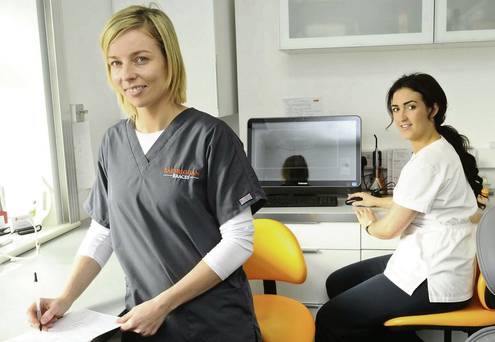Children usually lose their last baby tooth around age 12 or 13. In most, the loss of a baby tooth is followed almost immediately by the eruption of the permanent one. If a baby tooth has been lost and a replacement does not appear in a reasonable amount of time, it could be because it is crowded, impacted (headed in wrong direction), or missing. The best way to determine what is going on is a dental x-ray. What can be done if your child is missing a tooth?
There are three options when a permanent tooth is missing
- Keep the baby tooth
- Replace the missing tooth
- Close the space with braces These options are not necessarily interchangeable and the best choice is determined by other variables that include the condition of the teeth, the bite, and the amount of crowding.
If the bite is good, there is no crowding and Orthodontic treatment is not otherwise required the best option is to keep the baby tooth as long as possible and then replace the permanent one after the baby one has fallen out. If the baby tooth is in good condition, it may remain in place indefinitely. If it is in poor condition or if its root has been lost, the tooth can be replaced by an implant or a bridge.
Trying to close a space with braces when there is no crowding and the bite is good is a long, difficult process that can introduce problems as bad or worse than the original. The extended treatment time and asymmetrical mechanics can lead to uneven arches as well as bone and gum problems.
If there is crowding or a bite issue that would require the removal of teeth anyway, removing the baby tooth and closing the space is a good option. This is the case in the lower arch when there is crowding or an underbite.
If all of the teeth have developed normally, one treatment option involves the removal of lower premolars. If a premolar is already missing, only one other permanent tooth would need to go (since the other was never there). If there is crowding or protrusion in the upper, it is not uncommon for upper premolars to be removed. If upper laterals or premolars are congenitally missing (from birth), the space can be closed leaving no need for a bridge or implants. Again, closing a space where there is no crowding or a bite problem is not usually a good idea.
What is the most appropriate treatment for your child? An early examination by an Orthodontic practitioner at Balbriggan Braces is the best way to find out. During the exam, we will examine the alignment of the teeth, the amount of crowding, and the bite. If the space can be closed with braces, that option will be presented. If space closure is not appropriate, we will work with your dentist to prepare the mouth so that the tooth can eventually be replaced.





